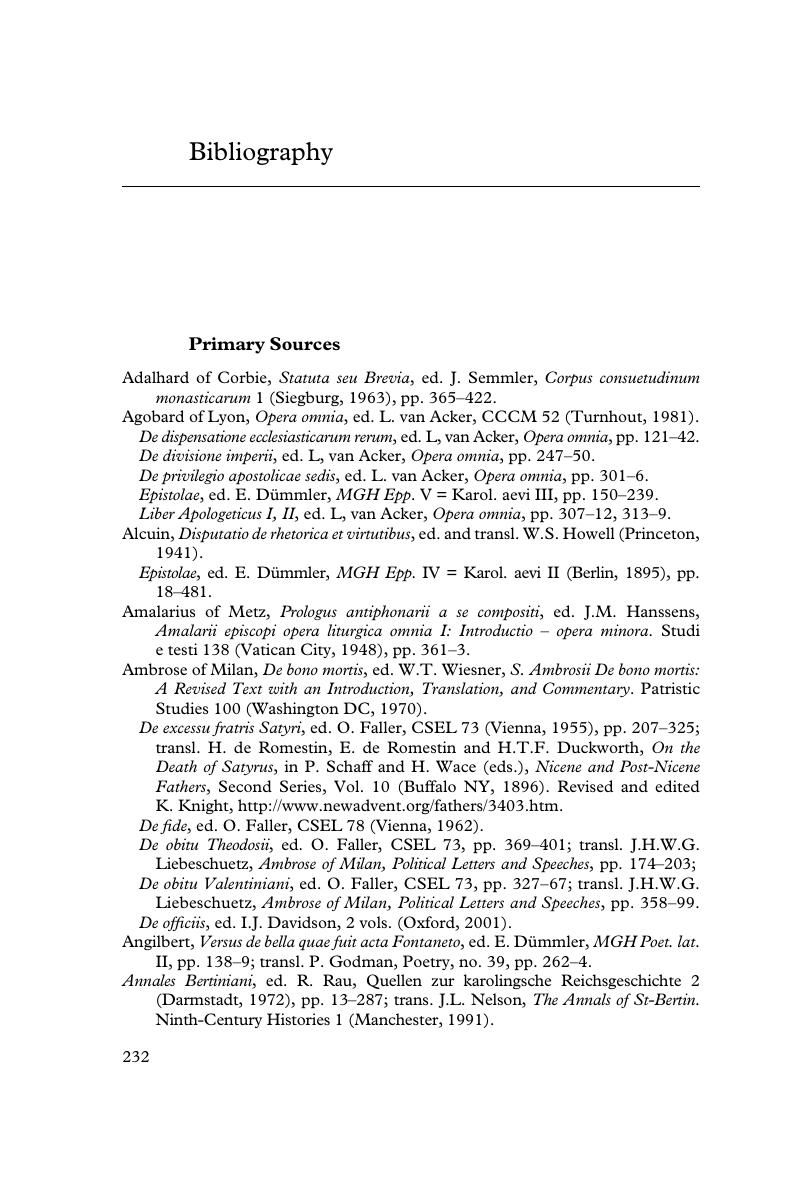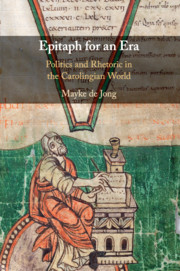Book contents
- Epitaph for an Era
- Epitaph for an Era
- Copyright page
- Dedication
- Contents
- Maps and Tables
- Preface and Acknowledgements
- A Note on Annotation, Citation, Translation and Names
- Abbreviations
- 1 Introduction: Epitaph for an Era
- Part I History
- Part II Rhetoric
- Part III Politics
- Bibliography
- General Index
- References
Bibliography
Published online by Cambridge University Press: 20 May 2019
- Epitaph for an Era
- Epitaph for an Era
- Copyright page
- Dedication
- Contents
- Maps and Tables
- Preface and Acknowledgements
- A Note on Annotation, Citation, Translation and Names
- Abbreviations
- 1 Introduction: Epitaph for an Era
- Part I History
- Part II Rhetoric
- Part III Politics
- Bibliography
- General Index
- References
Summary

- Type
- Chapter
- Information
- Epitaph for an EraPolitics and Rhetoric in the Carolingian World, pp. 232 - 256Publisher: Cambridge University PressPrint publication year: 2019



